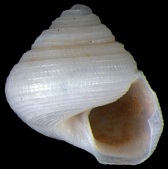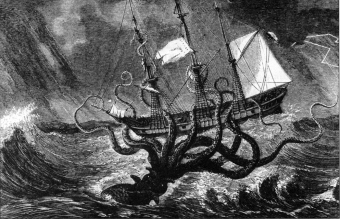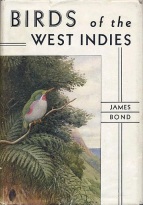Cabinets of curiosities (a.k.a. Wunderkammer) were encyclopedic collections kept by people in the Renaissance, containing objects from natural history, archaeology and art. They were the predecessors of modern museum collections.
Here I present some curious animals and stories that emerged from my research.
 Snails with strange names
Snails with strange names
Some snails received very strange scientific names in my hands.
See how and why by clicking here.
Releasing the Kraken
 The giant sea monster that terrorized sailors in northern Europe was actually based on sightings of the giant squid, Architeuthis.
The giant sea monster that terrorized sailors in northern Europe was actually based on sightings of the giant squid, Architeuthis.
You can learn more about the history and mythology of the Kraken and about the biology of Architeuthis by clicking here.
 The birds of James Bond
The birds of James Bond
Few know that the name of the superspy actually came from an ornithologist working on the Caribbean. Ian Fleming, an enthusiastic bridwatcher, named his character after this scientist.
Discover how that came to be by reading the article or this simpler blog post.
Mollusks on postage stamps
The beauty of molluscan shells have been capturing people’s fancy since prehistory, so it’s not so strange to find them well represented in worldwide postage stamps. Almost from the start of Philately (in 1840), mollusks began to appear on stamps – the first one dates from 1859.
Brazil was the third country to adopt the revolutionary postal system and thus has a long philatelic history. It is also a megadiverse country, with thousands of molluscan species. This article focuses on the mollusks that appear on Brazilian postage stamps.

You must be logged in to post a comment.